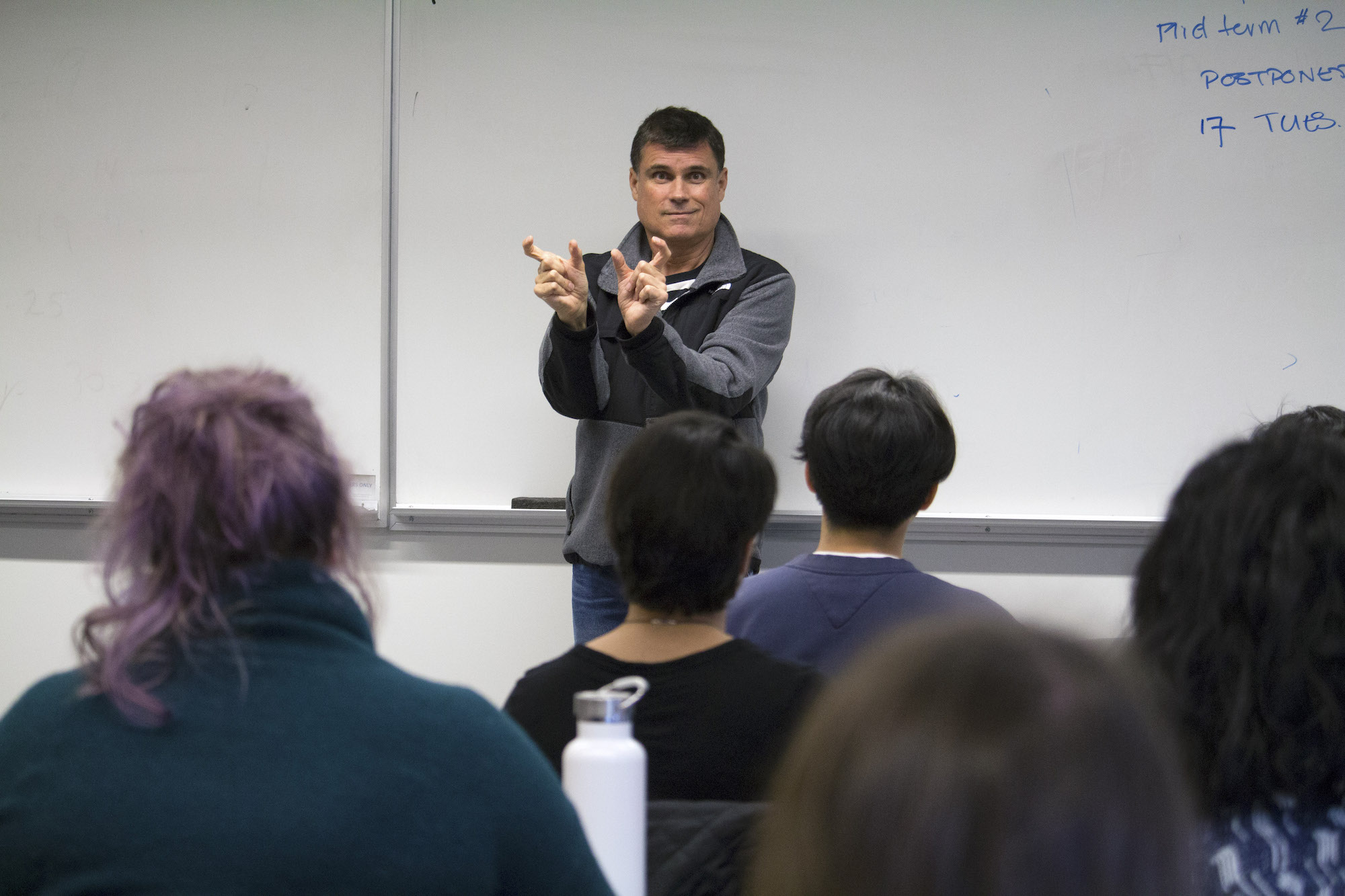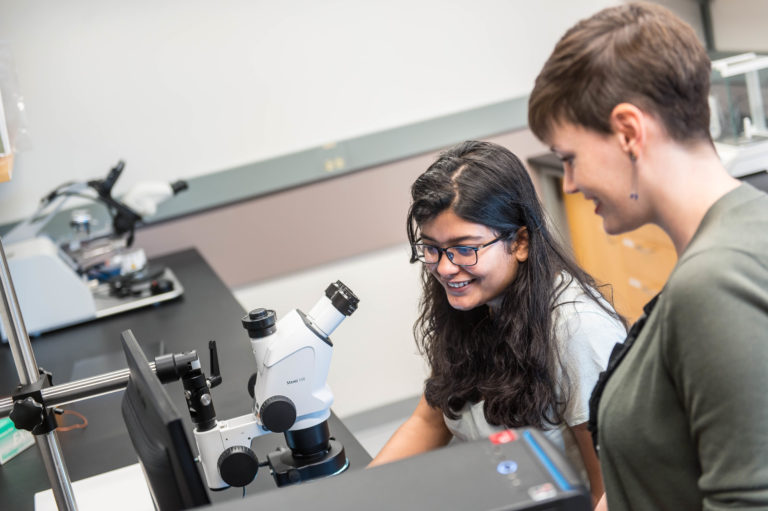Are you a fan of COVID-19 briefings interpreter Nigel Howard? You can take his ASL courses this fall at UBC
You've likely seen Nigel Howard interpreting at the provincial COVID-19 briefings. You might even have joined his Facebook fan club. And this week, students will be taking American Sign Language (ASL) as an official credit course with him at UBC.

Nigel Howard, an adjunct professor in the linguistics department and Language Sciences member, has attracted media attention (and a fan following) for his expressive interpretation of provincial health officer Bonnie Henry's COVID-19 updates.
You’ve likely seen Nigel Howard interpreting at the provincial COVID-19 briefings. You might even have joined his Facebook fan club. And this week, students will be taking American Sign Language (ASL) as an official credit course with him at UBC.
Howard, an adjunct professor in the linguistics department and Language Sciences member, has attracted media attention (and a fan following) for his expressive interpretation of provincial health officer Bonnie Henry’s COVID-19 updates. And when Linguistics opened a second section of his ASL 100 class for term one, it filled up within five days. He explains why having ASL courses at UBC has the potential for huge impact, and a positive role within other departments.
What will students learn? How will teaching and learning ASL online be different from in-person?
ASL 100 is for students new to ASL and Deaf Culture. They’ll learn about core grammar and vocabulary, contextual use, and the connection between language and Deaf culture. ASL 101 builds on 100 and includes training in using the language appropriately for meaningful interactions with members of the Deaf community.
ASL is similar to other signed languages such as British, Japanese, Russian in that they are very much 3-dimensional. It is a physically visual language using space in front of you to convey complex and sophisticated discourse. Also, it may not be possible to incorporate Deaf norms for things such as attention getting, conversational openers, and back-channelling. Doing this remotely, even though temporary until the university deems it safe to return to in-person classes, will be a challenge. It is something I have to be creative about to ensure students benefit from and appreciate ASL. New world new challenges, eh.
Why is it important that UBC offer credit courses in ASL?
UBC has both medical and educational schools, so trainees could benefit from a better understanding of Deaf culture, ultimately changing how people who are deaf are portrayed in media and society. A common misconception is that being deaf is an audiological or medical, experience, rather than a cultural one. Imagine the scenario where a doctor tells parents their child has ‘failed’ a hearing test, a negative connotation that can affect the parent-child relationship. We need to shift the lens – your child is healthy, and deaf.
ASL could benefit both young children who are deaf, with research showing the cognitive benefits, and an aging population who may be losing their hearing. However, teachers often didn’t have the fluency required to teach native signers of ASL, and classrooms in Canada are not set up to accommodate them. These courses are a step towards improving this training.
How has COVID-19 shown the need for these classes?
The ASL classes have always been popular. For example, I have been teaching at University of Victoria for 11 years and all ASL courses have always been full with sufficient waitlists. However, the general population has become more intrigued. For too long, there had been no sign language interpreters on television or in any other form of media. People have the assumption that reading closed captioning would be more than adequate, not realizing that the majority of Deaf people consider ASL as their primary language and English as their second language. The closed captioning does not convey, for example, the nuances and intensity of the messages.



